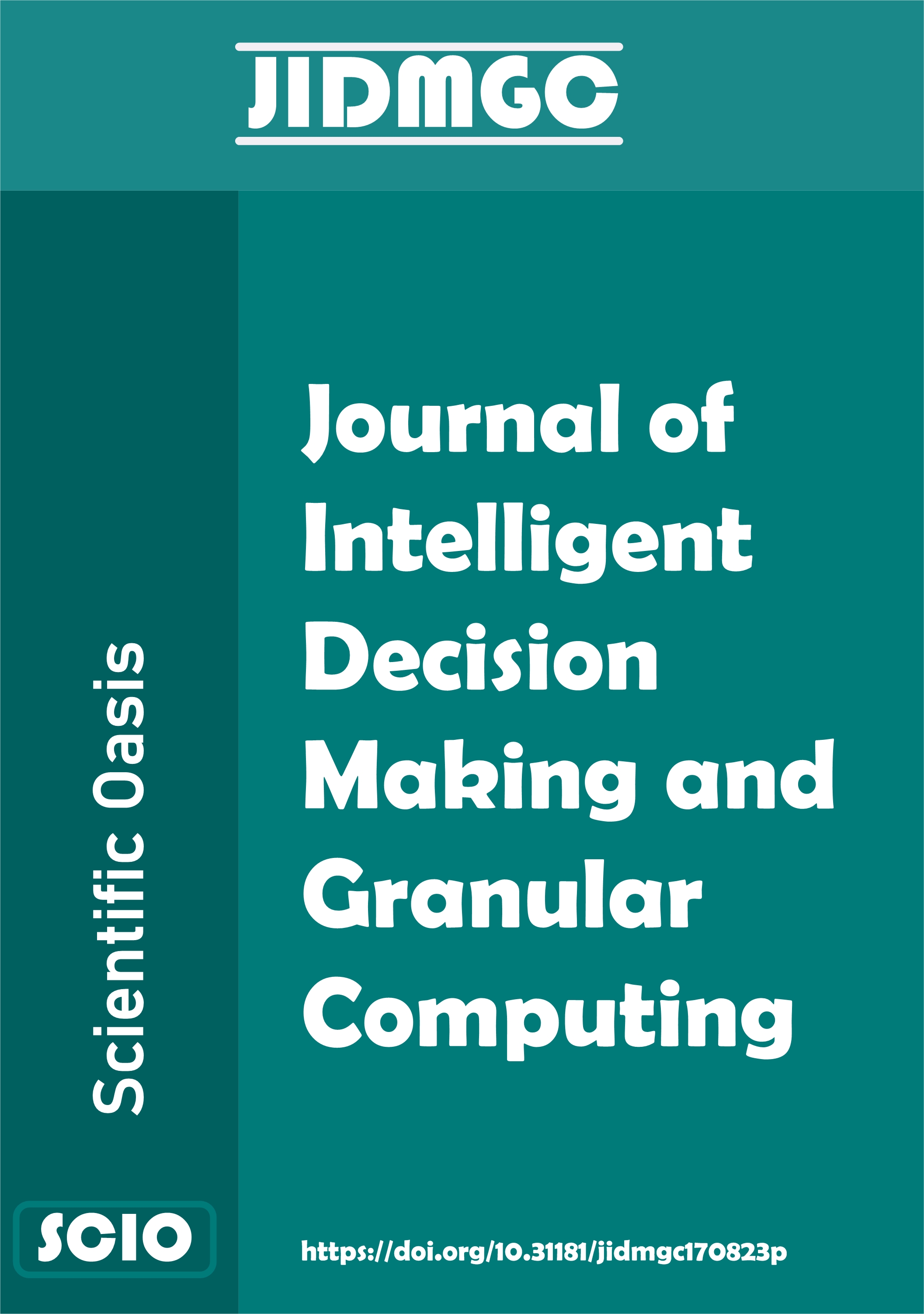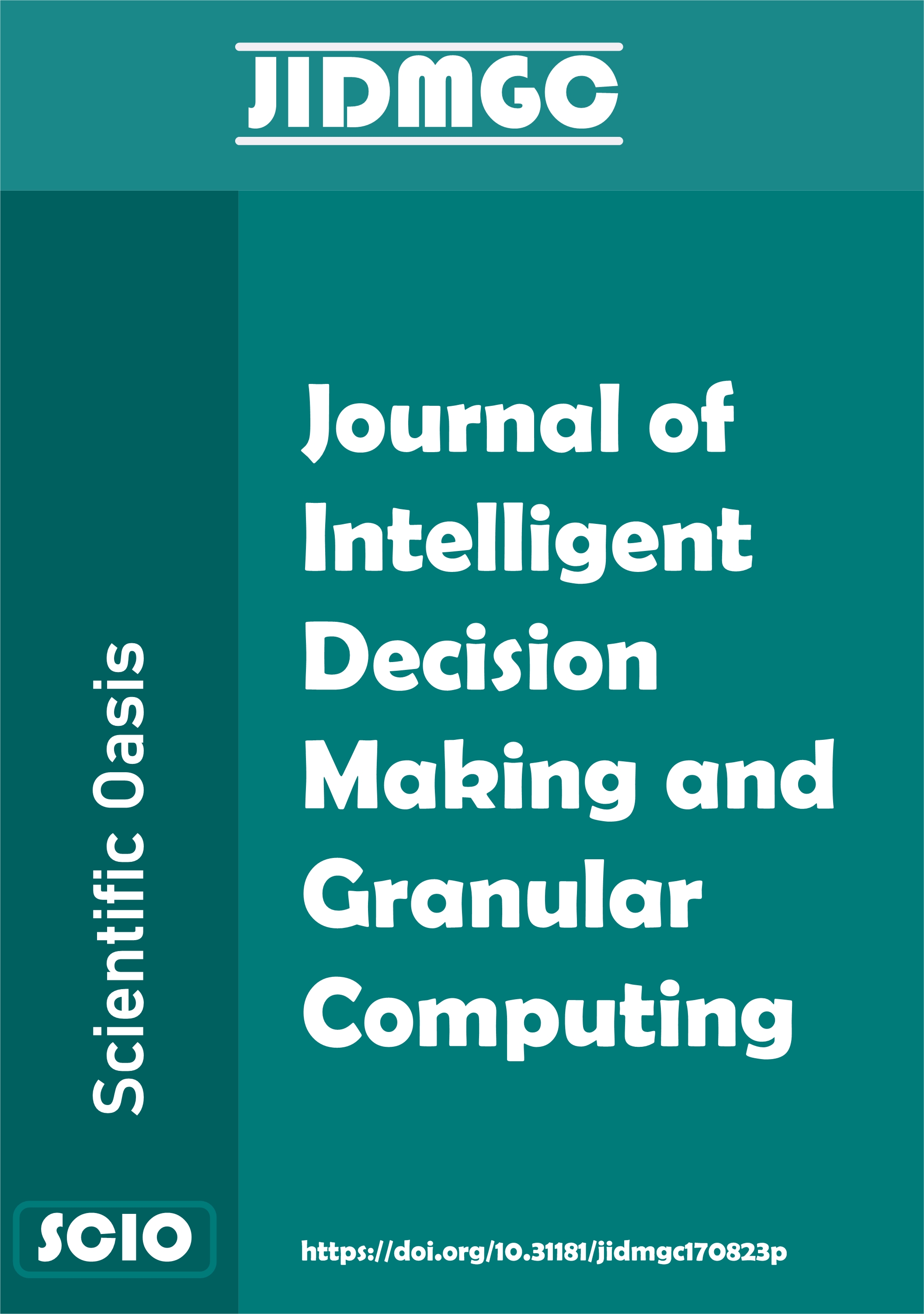Integrated Fermatean Fuzzy SWARA and Q-ROF-EDAS Methodology for Supplier Evaluation in the Shipyard Industry
DOI:
https://doi.org/10.31181/jidmgc1120257Keywords:
Supplier selection, Maritime studies, q-Rung orthopair fuzzy sets, EDAS, Fermatean Fuzzy SWARAAbstract
In recent years, increasing complexity in supply chains and the presence of high cost and risk factors in project-based industries such as shipbuilding have made supplier selection a critical decision-making problem. In this context, this study evaluates the criteria that shipyards should consider in supplier selection using an integrated multi-criteria decision-making (MCDM) approach based on Fermatean Fuzzy SWARA (FF-SWARA) and q-Rung Orthopair Fuzzy Set-based EDAS (q-ROF EDAS) methods. In the first stage of the study, the importance weights of twelve supplier selection criteria—gathered under two main categories based on expert opinions and literature review—were determined using the FF-SWARA method. In the second stage, supplier alternatives were ranked using the q-ROF EDAS method. A sensitivity analysis was also conducted in the study, and rankings generated under 100 different scenarios were evaluated. The results obtained demonstrate the practical applicability of the proposed method and its capability to address uncertainty in the decision-making process, contributing to more consistent and informed decisions in the shipyard and shipbuilding sectors.
Downloads
References
Guliyev, J., Güneri, B., Konur, M., Duymaz, Ş., & Türk, A. (2025). Offshore wind power site selection in Türkiye using q-rung orthopair fuzzy sets and the COPRAS method. Journal of Operations Intelligence, 3(1), 278-302. https://doi.org/10.31181/jopi31202551
Bisht, G., & Pal, A. K. (2024). A novel 4D hybrid decision-making approach and its applications in supplier selection problem. OPSEARCH, 1-31. https://doi.org/10.1007/s12597-024-00842-5
Erdebilli, B., & Sıcakyüz, Ç. (2024). An integrated Q-rung orthopair fuzzy (Q-ROF) for the selection of supply-chain management. Sustainability, 16(12), 4901. https://doi.org/10.3390/su16124901
Saqlain, M., Xin, X. L., Zulqarnain, R. M., Siddique, I., Askar, S., & Alshamrani, A. M. (2024). Energy supplier selection using Einstein aggregation operators in an interval-valued q-rung orthopair fuzzy hypersoft structure. AIMS Mathematics, 9(11), 31317-31365. https://doi.org/10.3934/math.20241510
Güneri, B., & Deveci, M. (2023). Evaluation of supplier selection in the defense industry using q-rung orthopair fuzzy set based EDAS approach. Expert Systems with Applications, 222, 119846. https://doi.org/10.1016/j.eswa.2023.119846
Khan, S., Gulistan, M., Kausar, N., Pamucar, D., Ozbilge, E., & El-Kanj, N. (2023). q-Rung orthopair fuzzy hypersoft ordered aggregation operators and their application towards green supplier. Frontiers in Environmental Science, 10, 1048019. https://doi.org/10.3389/fenvs.2022.1048019
Xu, Y. (2023). A two-stage multi-criteria decision-making method with interval-valued q-rung orthopair fuzzy technology for selecting bike-sharing recycling supplier. Engineering Applications of Artificial Intelligence, 119, 105827. https://doi.org/10.1016/j.engappai.2023.105827
Fetanat, A., & Tayebi, M. (2023). Industrial filtration technologies selection for contamination control in natural gas processing plants: A sustainability and maintainability-based decision support system under q-rung orthopair fuzzy set. Process Safety and Environmental Protection, 170, 310-327. https://doi.org/10.1016/j.psep.2022.12.014
Kamacı, H., & Petchimuthu, S. (2022). Some similarity measures for interval-valued bipolar q-rung orthopair fuzzy sets and their application to supplier evaluation and selection in supply chain management. Environment, Development and Sustainability, 1-40. https://doi.org/10.1007/s10668-022-02130-y
Liu, P., Pan, Q., Xu, H., & Zhu, B. (2022). An extended QUALIFLEX method with comprehensive weight for green supplier selection in normal q-rung orthopair fuzzy environment. International Journal of Fuzzy Systems, 24(5), 2174-2202. https://doi.org/10.1007/s40815-021-01234-3
Mishra, A. R., Rani, P., Saha, A., Pamucar, D., & Hezam, I. M. (2022). A q-rung orthopair fuzzy combined compromise solution approach for selecting sustainable third-party reverse logistics provider. Management Decision, 61(6), 1816-1853. https://doi.org/10.1108/MD-01-2022-0047
Pınar, A., Babak Daneshvar, R., & Özdemir, Y. S. (2021). q-Rung orthopair fuzzy TOPSIS method for green supplier selection problem. Sustainability, 13(2), 985. https://doi.org/10.3390/su13020985
Saha, A., Majumder, P., Dutta, D., & Debnath, B. K. (2021). Multi-attribute decision making using q-rung orthopair fuzzy weighted fairly aggregation operators. Journal of Ambient Intelligence and Humanized Computing, 12, 8149-8171. https://doi.org/10.1007/s12652-020-02551-5
Krishankumar, R., Gowtham, Y., Ahmed, I., Ravichandran, K. S., & Kar, S. (2020). Solving green supplier selection problem using q-rung orthopair fuzzy-based decision framework with unknown weight information. Applied Soft Computing, 94, 106431. https://doi.org/10.1016/j.asoc.2020.106431
Pınar, A., & Boran, F. E. (2020). A q-rung orthopair fuzzy multi-criteria group decision making method for supplier selection based on a novel distance measure. International Journal of Machine Learning and Cybernetics, 11, 1749-1780. https://doi.org/10.1007/s13042-020-01070-1
Gao, H., Ran, L., Wei, G., Wei, C., & Wu, J. (2020). VIKOR method for MAGDM based on q-rung interval-valued orthopair fuzzy information and its application to supplier selection of medical consumption products. International Journal of Environmental Research and Public Health, 17(2), 525. https://doi.org/10.3390/ijerph17020525
Riaz, M., Pamucar, D., Athar Farid, H. M., & Hashmi, M. R. (2020). q-Rung orthopair fuzzy prioritized aggregation operators and their application towards green supplier chain management. Symmetry, 12(6), 976. https://doi.org/10.3390/sym12060976
Tian, X., Niu, M., Zhang, W., Li, L., & Herrera Viedma, E. (2020). A novel TODIM based on prospect theory to select green supplier with q-rung orthopair fuzzy set. Technological and Economic Development of Economy, 27(2), 284-310. https://doi.org/10.3846/tede.2020.12736
Saaty, T. L. (1980). The analytic hierarchy process (AHP). The Journal of the Operational Research Society, 41(11), 1073-1076.
Shah, N., Shah, P., & Patel, M. (2022). Pricing decisions with effect of advertisement and greening efforts for a greengocer. Sustainability, 14(21), 13807. https://doi.org/10.3390/su142113807
Gosling, J., Purvis, L., & Naim, M. M. (2010). Supply chain flexibility as a determinant of supplier selection. International Journal of Production Economics, 128(1), 11-21. https://doi.org/10.1016/j.ijpe.2009.08.029
Durugbo, C. M. (2020). After-sales services and aftermarket support: a systematic review, theory and future research directions. International Journal of Production Research, 58(6), 1857-1892. https://doi.org/10.1080/00207543.2019.1693655
Yager, R. R. (2016). Generalized orthopair fuzzy sets. IEEE Transactions on Fuzzy Systems, 25(5), 1222-1230. https://doi.org/10.1109/TFUZZ.2016.2604005
Katsikeas, C. S., Paparoidamis, N. G., & Katsikea, E. (2004). Supply source selection criteria: The impact of supplier performance on distributor performance. Industrial Marketing Management, 33(8), 755-764. https://doi.org/10.1016/j.indmarman.2004.01.002
Korucuk, S., Aytekin, A., Ecer, F., Karamaşa, Ç., & Zavadskas, E. K. (2022). Assessing green approaches and digital marketing strategies for twin transition via fermatean fuzzy SWARA-COPRAS. Axioms, 11(12), 709. https://doi.org/10.3390/axioms11120709
Senapati, T., & Yager, R. R. (2020). Fermatean fuzzy sets. Journal of Ambient Intelligence and Humanized Computing, 11, 663-674. https://doi.org/10.1007/s12652-019-01377
Aydoğan, H., & Ozkir, V. (2024). A Fermatean fuzzy MCDM method for selection and ranking Problems: Case studies. Expert Systems with Applications, 237, 121628. https://doi.org/10.1016/j.eswa.2023.121628
Ayyildiz, E. (2022). Fermatean fuzzy step-wise Weight Assessment Ratio Analysis (SWARA) and its application to prioritizing indicators to achieve sustainable development goal-7. Renewable Energy, 193, 136-148. https://doi.org/10.1016/j.renene.2022.05.021
Yager, R. R., & Abbasov, A. M. (2013). Pythagorean membership grades, complex numbers, and decision making. International Journal of Intelligent Systems, 28(5), 436-452. https://doi.org/10.1002/int.21584
Wang, L., & Garg, H. (2021). Algorithm for multiple attribute decision-making with interactive Archimedean norm operations under Pythagorean fuzzy uncertainty. International Journal of Computational Intelligence Systems, 14(1), 503-527. https://doi.org/10.2991/ijcis.d.201215.002
Yager, R. R., & Alajlan, N. (2017). Approximate reasoning with generalized orthopair fuzzy sets. Information Fusion, 38, 65-73. https://doi.org/10.1016/j.inffus.2017.02.005
Ali, M. I. (2018). Another view on q‐rung orthopair fuzzy sets. International Journal of Intelligent Systems, 33(11), 2139-2153. https://doi.org/10.1002/int.22007
Khan, M. J., Kumam, P., & Shutaywi, M. (2021). Knowledge measure for the q‐rung orthopair fuzzy sets. International Journal of Intelligent Systems, 36(2), 628-655. https://doi.org/10.1002/int.22313
Wei, G., Gao, H., & Wei, Y. (2018). Some q‐rung orthopair fuzzy Heronian mean operators in multiple attribute decision making. International Journal of Intelligent Systems, 33(7), 1426-1458. https://doi.org/10.1002/int.21985
Peng, X., & Dai, J. (2019). Research on the assessment of classroom teaching quality with q‐rung orthopair fuzzy information based on multiparametric similarity measure and combinative distance‐based assessment. International Journal of Intelligent Systems, 34(7), 1588-1630. https://doi.org/10.1002/int.22109
Liu, P., & Wang, P. (2018). Some q‐rung orthopair fuzzy aggregation operators and their applications to multiple‐attribute decision making. International Journal of Intelligent Systems, 33(2), 259-280. https://doi.org/10.1002/int.21927
Keshavarz Ghorabaee, M., Zavadskas, E. K., Olfat, L., & Turskis, Z. (2015). Multi-criteria inventory classification using a new method of evaluation based on distance from average solution (EDAS). Informatica, 26(3), 435-451. https://doi.org/10.3233/INF-2015-107
Deveci, M., Gokasar, I., Pamucar, D., Biswas, S., & Simic, V. (2022). An integrated proximity indexed value and q-rung orthopair fuzzy decision-making model for prioritization of green campus transportation. In q-Rung orthopair fuzzy sets: Theory and applications (pp. 303-332). Springer Nature Singapore. https://doi.org/10.1007/978-981-19-1449-2_12
Downloads
Published
Issue
Section
License
Copyright (c) 2025 Mine Konur Bilgen, Bartu Guneri, Selen Baldıran (Author)

This work is licensed under a Creative Commons Attribution 4.0 International License.













 All site content, except where otherwise noted, is licensed under the
All site content, except where otherwise noted, is licensed under the 